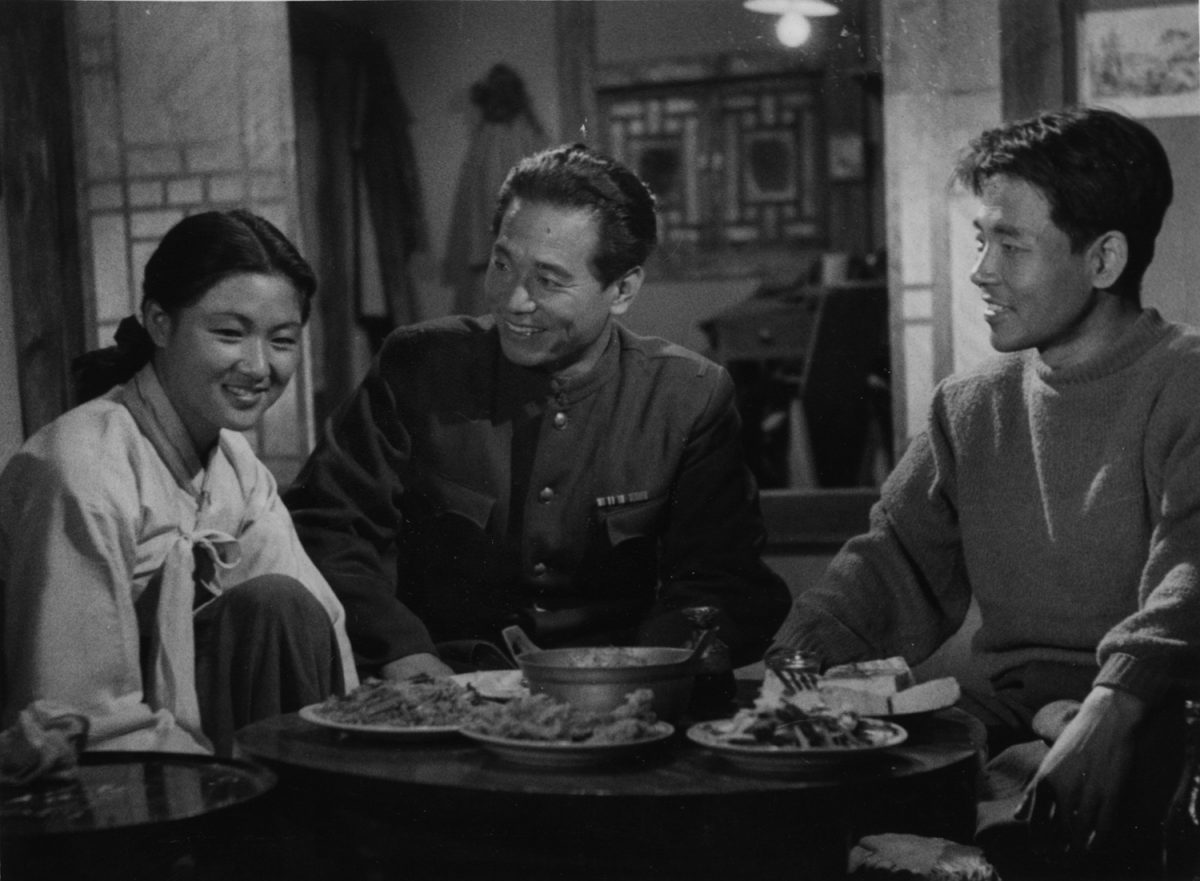Moranbong

Claude-Jean Bonnardot
France – 1960

Screenplay: Armand Gatti, Claude-Jean Bonnardot (adaptation)
Cinematography: Kiung-Ouan Pak
Production: Films d’Aujourd’hui Ombre et Lumière
Language: Korean
Duration: 84 min
Color: Black and White
Synopsis: The year is 1950 and Korea is on the brink of civil war. In Kaesong village, a young carpenter and the daughter of a traditional musician are in love. On the eve of the conflict, the girl’s father is arrested by the South Korean police, and hostilities break out as the village is occupied by troops from the North. The young man signs up to fight alongside them, but is wounded and survives thanks to the young woman who gives him shelter. When he regains his strength he rejoins the fight, but is taken prisoner. He does whatever he can to escape back to his beloved, who has in the meantime become one of the principle pansori singers at the Moranbong theatre, where performances lift the people’s spirits in an underground shelter.
Notes:
The origin of this Moranbong can be traced to the visit of a French delegation to North Korea in 1958. This was the first official visit by Western Europeans to this country after the war, and included artists such as filmmaker Claude Lanzmann, singer/songwriter Francis Lemarque, photographer/filmmaker Chris Marker—who would put together a unique book of essays and photographs based on this visit—and the screenwriters of this film, Armand Gatti and Jean-Claude Bonnardot. Touched by what they saw, they described that the wounds and trauma of the division of a nation seemed to be ingrained in all Koreans, North and South alike. This moved them to create a fiction film based on historical events and shot on location with Korean actors and crew. Moranbong is the first co-production between North Korea and a country not belonging to the socialist bloc, and one of two known collaborations between North Korea and France. The second film, Gandahar, is a science fiction animation about the struggle for survival of a utopian society that lives in harmony with Nature against an evil force from the future. Production work was done by SEK Animation Studio of North Korea based on art by French comic book artist Caza, while voice and music were recorded in France.
Moranbong is among the first to use the trope of lovers separated by war as a parable of a divided Korea. More recently, Swiri (1999) addresses the still-thorny issue of reunification in a similar way, with the addition of big-budget, pumping Halyu action. For their part, Bonnardot and Gatti show an appropriate amount of cultural sensitivity by including, for instance, the traditional pansori opera “Chunhyang” in the narrative, while avoiding to over-exoticize (or orientalize) the story. Moranbong holds true to the ideals of its time, striving to be a humanist, pacifist, universal story that denounces the horrors of war, while, through the figure of the journalist, attempting to raise awareness among French audiences of the situation on the Korean peninsula, scarcely known in the West at the time.
Moranbong was censored in 1959 for contradicting French foreign policy, pushing producer Marcel Degliame to attempt to pass the film off as Belgian. It was banned from distribution and export because it purportedly cast UN peacekeepers in Korea in a bad light, portraying a UN-led bombardment of a North Korean theatre. North Korean soldiers are, conversely, shown to trample on American and UN uniforms. Moranbong was shown publicly only once in 1960 at Cannes, until the French minister of information lifted the ban in 1963. The film was shown for the first time in North Korea in 2010 during the twelfth Pyongyang International Film Festival, where it won a special prize from the festival organization committee. Moranbong was restored by the French National Archives at the Centre national du cinema.


